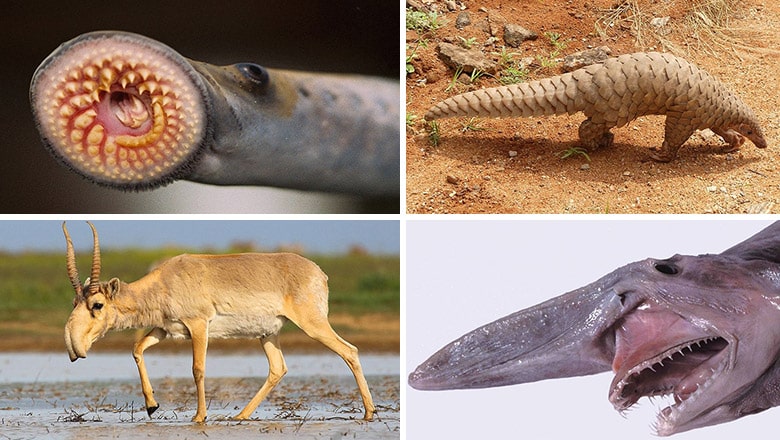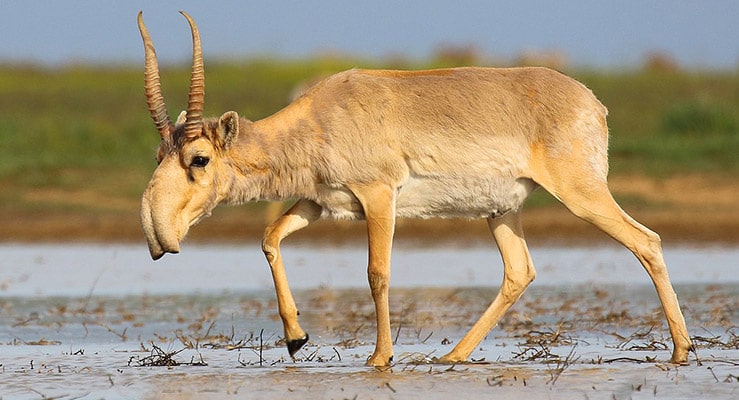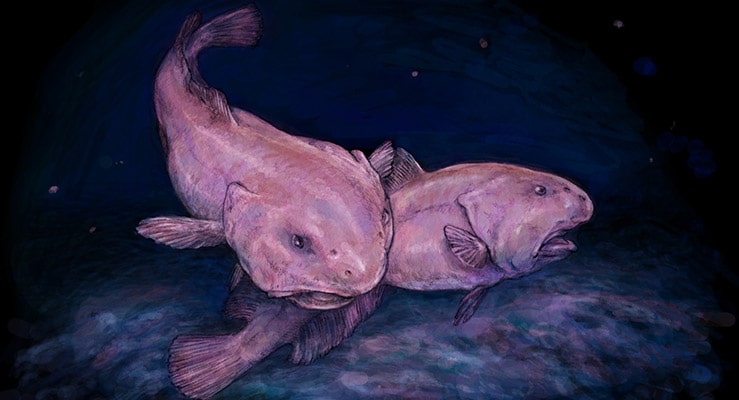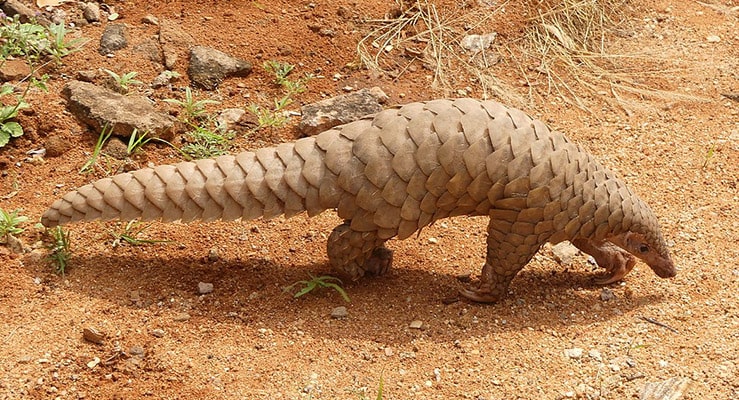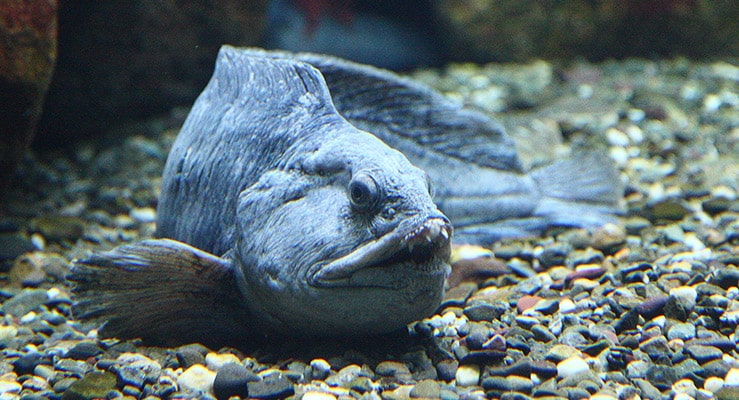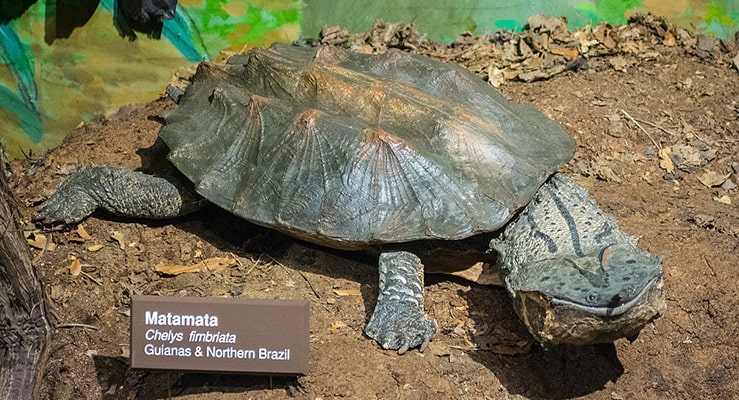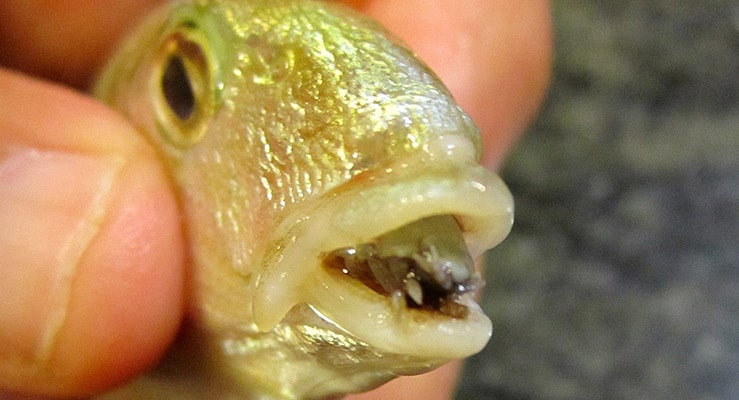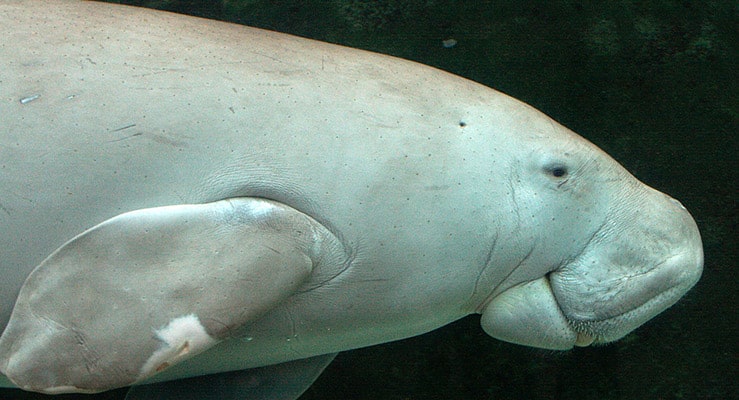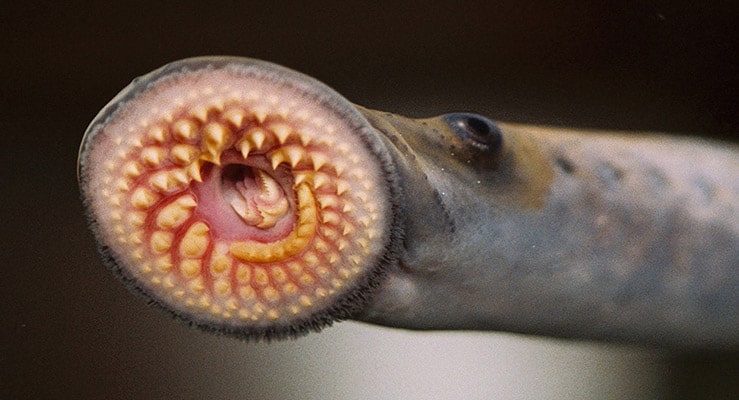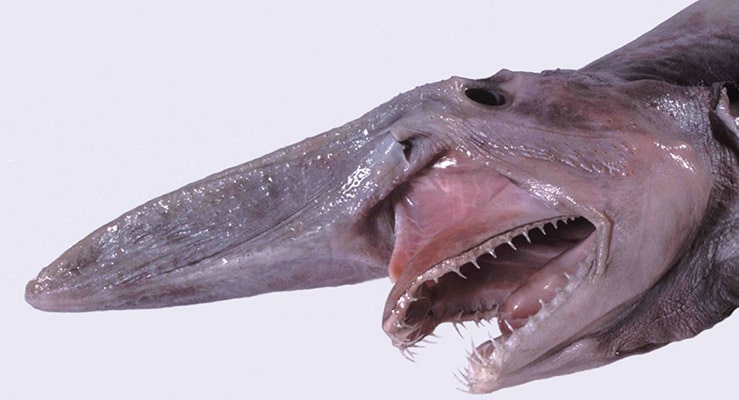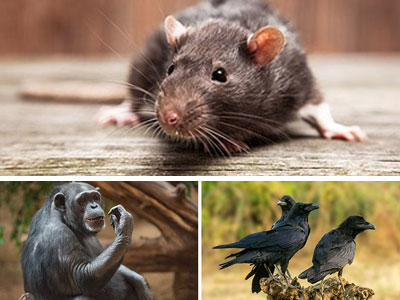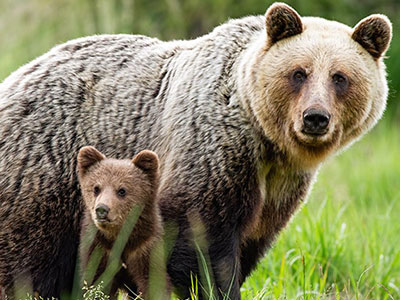- 1. Saiga Antelope (Saiga Taratica)
- 2. Blobfish (Psychrolutes Marcidus)
- 3. The Ground Pangolin (Smutsia Temminckii)
- 4. Atlantic wolffish (Anarhichas Lupus)
- 5. Axolotl (Ambystoma Mexicanum)
- 6. Matamata (Chelus Fimbriata)
- . The Tongue-Eating Louse (Cymothoa Exigua)
- 8. Dugong (Dugong Dugon)
- 9. Sea Lamprey (Petromyzon Marinus)
- 10. Japanese Spider Crab (Macrocheira Kaempferi)
- 11. Goblin Shark (Mitsukurina Owstoni)
- Final Word
The world is full of strange animals. The common animals that we know are just a glimpse of what is shown to a common world citizen. If you dig deep, you’ll come to find out that there are plenty of strange animals and that’s what we are going to talk about here.
Here are 11 of the world’s strangest animals and some of the characteristics that make them unique and fascinating.
1. Saiga Antelope (Saiga Taratica)
The Saiga Antelope, also known as the Saiga Taratica is an endangered type of antelope that initially used to inhabit a large area of the steppe zone of Eurasia. Currently, you can find the dominant Saiga antelope subspecies in Russia.
Characteristics:
- A downward-facing nose that filters dust during migration (their nose is actually what mainly makes them odd)
- Shoulders measure 24 to 32 inches
- They weigh between 57 to 152 inches
- Head and body length measures 39 to 55 inches
- Their coat changes in seasons and appears yellow or red during summer
- The antelope has the ability to develop a color similar to the sand
- Long hairs that measure between 0.71 to 1.18 inches during summer and during winter they can grow between 1.6 to 2.8 inches.
- Only males have horns that are thick and a bit translucent. Their horns can grow and reach up to 8.7 inches in length.
2. Blobfish (Psychrolutes Marcidus)
Blobfish belongs to the Psychrolutidae family and can be discovered in the deep sea. This fish mainly resides in deep waters in the mainland Tasmania and Australian, outside the coast area. Blobfish are quite unique especially due to their jelly-like bodies and features that make him look like an old and sad man.
Characteristics:
- Blobfish are shorter than 12 inches
- It populates depth areas of the waters between 2,000 and 3,900 feet where pressures are between 60 – 120 times greater than those of the sea level.
- They have a unique flesh with a density that is a bit less than that of water. That enables them to flow above the sea level without even swimming or using their energy.
- They have a jelly-like body mass
3. The Ground Pangolin (Smutsia Temminckii)
The ground pangolin belongs to the four pangolin species mainly found in Africa. The ground pangolin is the only one that can be found in eastern and southern Africa. The ground pangolin was named after Coenraad Jacob Temminck, a Dutch zoologist.
Characteristics:
- They mainly use their hind legs to walk
- They are covered with overlapping scales which are protective and made of keratin
- They look similar to artichoke or pinecone
- They measure 1 to 3 feet long and weigh between 10 – 60 pounds
- Ground pangolins have claws which are curved and specifically used to dig up burrows and destroy termite nests
- Their tongues are also long and muscular for lapping termites
- They don’t have ears and they also have poor vision
- They have a strong sense of smell
4. Atlantic wolffish (Anarhichas Lupus)
The Atlantic wolffish, also known as the sea-wolf is an Atlantic catfish and marine fish. Currently, the number of sea wolves in the US is reducing and it is thought to be due to reasons such as bycatch and overfishing. You can find the sea wolf in the east and west coast of the Atlantic.
Characteristics:
- The largest sea wolf ever recorded was approximately 5 feet long and weighed about 40 pounds
- They have a long body and their front is subcylindrical
- They have a dorsal fin which is even, extending their entire back length
- They have large, rounded pectorals
- They don’t have pelvic fins
- They swim slowly due to their obtuse body type
- The fish has a large teeth structure
- They live on the hard floor of the ocean
5. Axolotl (Ambystoma Mexicanum)
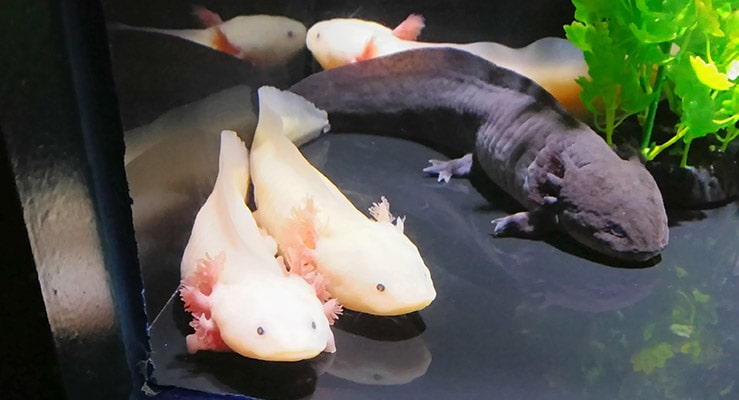
The Axolotl is closely related to the salamander since it is a neotenic salamander. It is popularly known as the walking fish but in real essence, it is an amphibian. Axolotl was originally found in lakes like Lake Xochimilco which is found in Mexico City.
Characteristics:
- They don't undergo metamorphosis
- An adult axolotl measures 6 – 18 inches long
- They have external gills
- They have a caudal fin which extends from their back to their vent
- They have lidless eyes and wide heads
- They have underdeveloped limbs and they have thin digits which are long
- Males have cloacae which are swollen and has a papillae lining, while females have bodies which are quite wide and they also have plenty of legs
- They can form color variants when they are mutated
6. Matamata (Chelus Fimbriata)
Mata Mata is a South American freshwater turtle found in Orinoco basins as well as Amazon. It is quite a unique species and the last of the genus Chelus extant species.
Characteristics:
- It is a very large turtle
- Mata Mata has a flat, triangular head that features plenty of tubercles and skin flaps
- On its snout, it has a horn
- On the chin, it has three barbells and on the upper jaw it has four additional ones
- The Mata Mata mainly inhabits blackwater streams which move slowly, swamps, pools which are stagnant and marshes on the north side of Bolivia, Ecuador, and the east side of Peru.
- It mainly prefers shallow waters
. The Tongue-Eating Louse (Cymothoa Exigua)
The tongue-eating louse is an isopod parasite that belongs to the Cymothoidae family. These are parasites that attack the fish and they enter them through the gills. The female tongue-eating louse enters the fish on the tongue, while the male enters the fish by attaching itself on the arches of the gill just below the female.
Characteristics:
- Females are 0.3 to 1.1 inches long and 0.16 to 0.55 inches wide. Males measure 0.3 to 0.6 inches long and 0.12 to 0.28 inches wide.
- They attack the blood vessels in the tongue of the fish
- Once it causes the tongue of the fish to fall off, it replaces it by attaching itself on the tongue stub’s muscles.
- The parasite is found in the south of the Gulf of California and the north side of the Gulf of Guayaquil.
8. Dugong (Dugong Dugon)
The dugong is a marine mammal with a medium-size and among the four living species of the Sirenia order. The species also includes the manatees. A surprising fact is that for thousands of years, the dugong has been hunted by people mainly for its oil and meat.
Characteristics:
- It has a large cylindrical body shape with both ends that taper
- Its skin is thick and smooth but dorsally it darkens to a brown, dark grey color as it ages.
- Short hair covers its body
- It has a tail that flukes and flippers similar to that of a dolphin.
- It has a brain that weighs approximately 300 g which is 0.1 percent total weight of the animal.
9. Sea Lamprey (Petromyzon Marinus)
The sea lamprey is a lamprey parasite that inhabits the northern hemisphere. Its body is similar to that of an eel and features a jawless mouth. It also has very sharp teeth which are arranged in a lot of circular rows.
Characteristics:
- They inhabit the sea or lakes
- Behind their eyes, you can find 7 branchial openings
- On the lateral area of their body, they have an olive color
- It attaches itself to the skin of the fish through the cup-like suction mouth
- Lampreys are a delicacy in some parts of Europe
10. Japanese Spider Crab (Macrocheira Kaempferi)
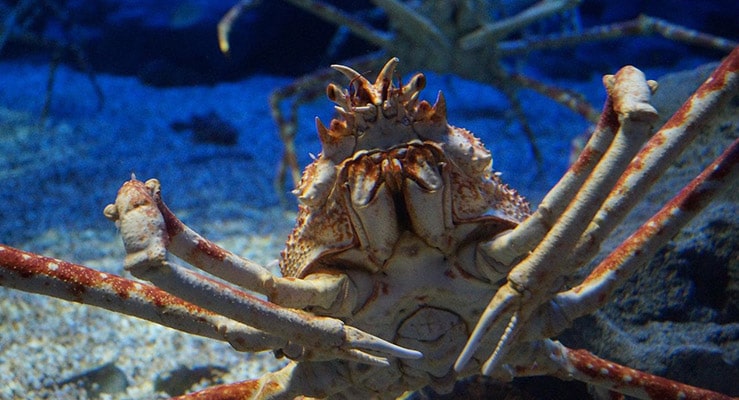
The Japanese spider crab is a marine crab species that mainly lives in the water in Japan. It has the largest arthropod leg span and they also go through three larval stages together with a stage of prezoeal to help them grow to a large size.
Characteristics:
- Their leg span reaches up to 12.1 feet
- They have bodies which grow up to 16 inches in width
- The whole crab weighs up to 42 pounds
- Normally, shorter chelipeds are found in females
- The crab has an orange color and, on the legs, there are white spots
11. Goblin Shark (Mitsukurina Owstoni)
The goblin shark is very rare and is normally found in the deep sea. It is the remaining representative of the Mitsukurinidae family, which is a lineage that spans up to 125 million years. The animal has a pink color on its skin and jaws which are elongated, with a flat snout and highly protrusive.
Characteristics:
- They can be found in submarine canyons, seamounts, as well as continental slopes
- It has a flabby body
- Its fins are quite small
- It can sense electric fields in a matter of minutes, thanks to its long snout that has Lorenzing ampullae covering the whole of it.
- Its long snout resembles a sword blade.
Final Word
The above animals are among some of the world’s strangest animals. There are plenty of other unusual animals in the world which you can always find out about by conducting in-depth research.

